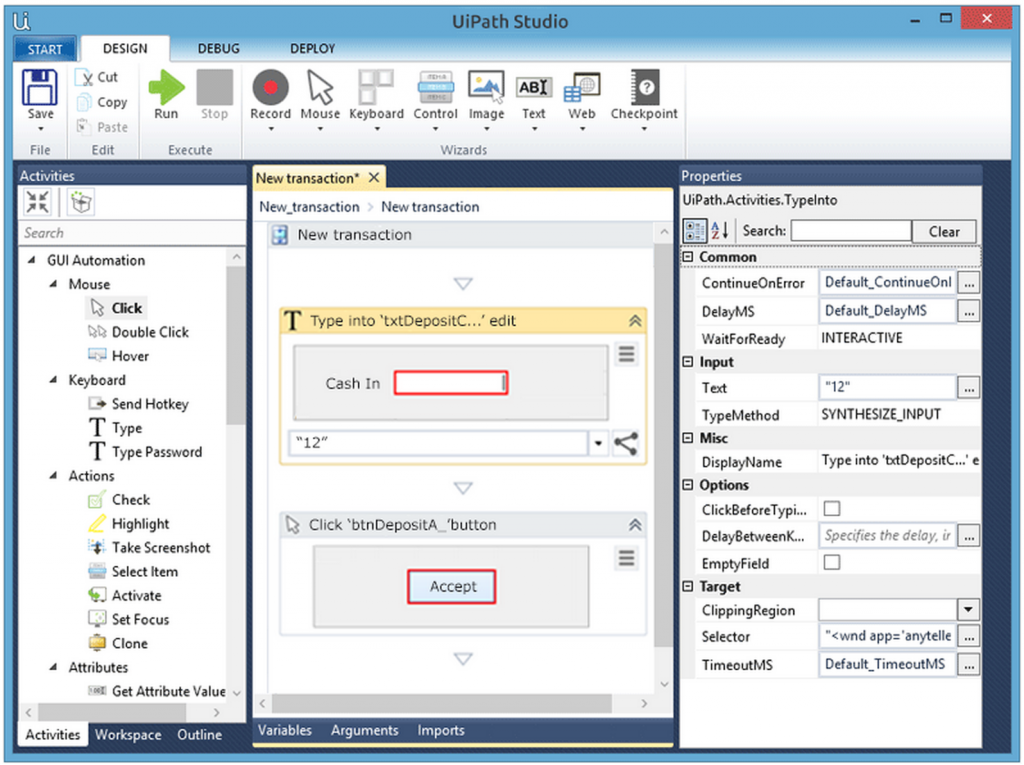We previously introduced RPA and discussed the coming change it will bring across a multitude of industries. Now we’ll take a look at the current leading RPA tools on the market, and analyze the pros and cons for both.
BluePrism
BluePrism is a pioneer of RPA, having both coined the term and being one of the first companies to offer an RPA solution. BluePrism has partnered with a variety of industry leaders including Microsoft, HP, IBM, etc.
As an enterprise grade solution, BluePrism stands to handle a majority of use cases. BluePrism gives you the option to incorporate coding into your processes – giving a developer a higher level of control/precision when it comes to fine tuning the automation processes. Additionally, BluePrism serves program management by integrating with existing automation process, security, and services. BluePrism is also extremely scalable, allowing you to deploy a high number of robot instances.
However, BluePrism is a higher cost solution. With limited training resources and a higher cost of training, smaller companies may not find BluePrism to be the best match for their needs. Users may also find the layout to be a little less friendly than an equivalent – and BluePrism does not offer any macro recorder capabilities (such as recording mouse events or simple keyboard activities to generate scripts).
UIPath
UIPath is currently a leading vendor of RPA, and serves RPA solutions to Deloitte, Ernst Young, SAP, & J.P. Morgan. UiPath offers three flagship RPA products:
- UiPath Studio
- Front Office and Back Office – UiPath Robots
- UiPath Orchestrator
UIPath is user friendly, and caters to the RPA beginner – by being easy to learn, it is a great entry level tool for RPA. Their drag and drop UI interface makes designing your workflows intuitive and relatively painless – and above all, is visually appealing. There is a multitude of resources dedicated to learning different facets of UIPath, from Youtube tutorials to online user guides (such as the UIPath Academy). UIPath also offers a free community edition of their platform, allowing a user to experiment and learn before purchasing. UIPath sacrifices a bit of control in being as accessible as it is – however, this wouldn’t be an issue for an entry level user.
Automation Anywhere
Yet another RPA Vendor, Automation Anywhere is being utilized in over 500 global enterprises & has partnered with companies such as IBM, KPMG, and Accenture.
Automation Anywhere is more developer centric – there is less to be garnered on the visual/readable side, but you’re provided more options/control – and in Java, which may be more preferable for some. You get a large selection of task widgets, and a storyboard function that documents scripts with screenshots. Additionally, Automation Anywhere is interesting in providing traditional RPA alongside cognitive elements like reading unstructured data, and organic language processing. However, first time RPA users may not find Automation Anywhere as initially friendly user-friendly.
Takeaway
As RPA inevitably grows, we’ll start to see other big players emerge; for now, UIPath, BP, and AA are leading the way. Coupled with it’s interface and resources, UIPath stands to be a great entry point for someone delving into RPA for the first time. BluePrism and Automation Anywhere are solid solutions for a developer with RPA experience who may be looking to deploy robots on a larger scale, and with more precise control options.



